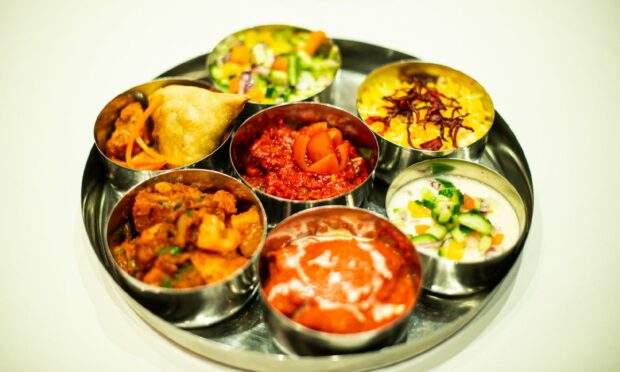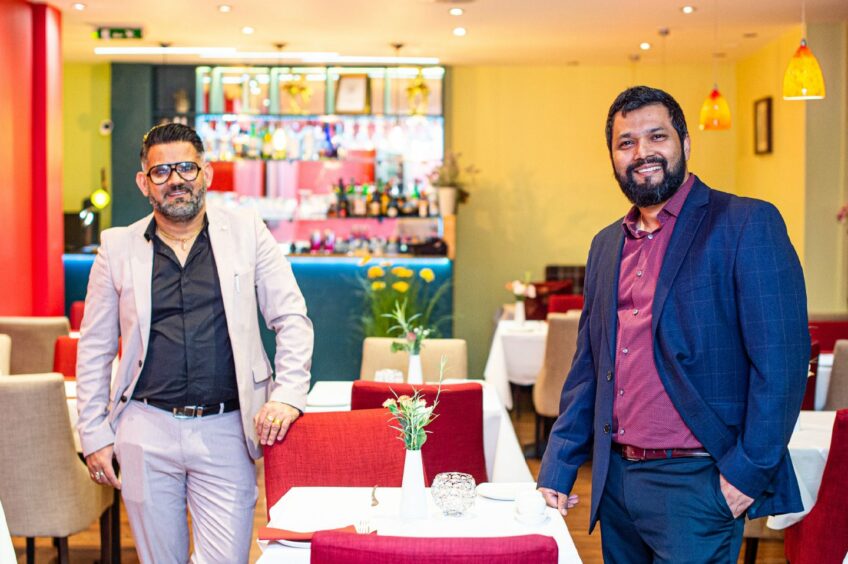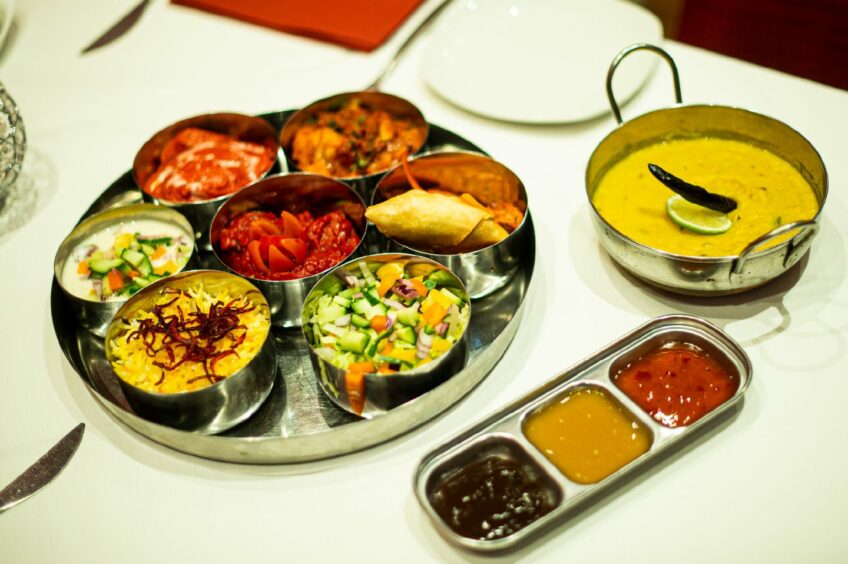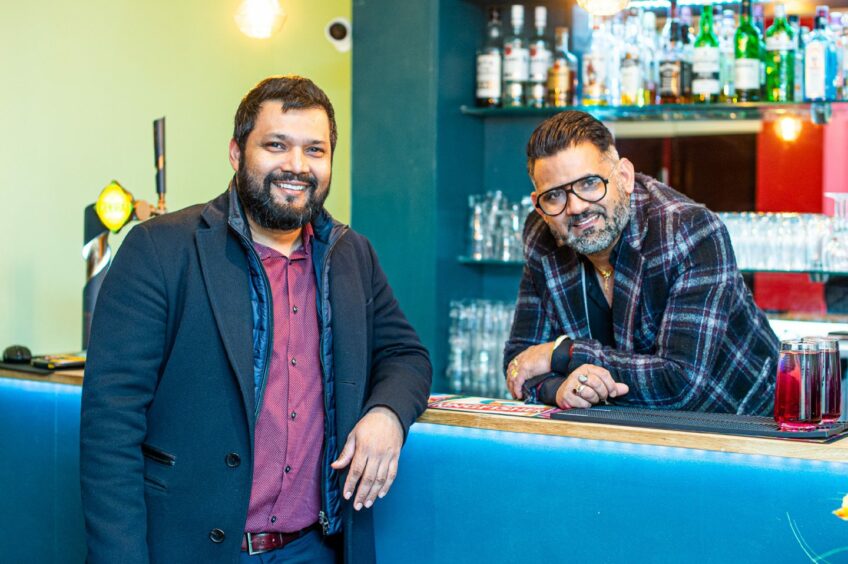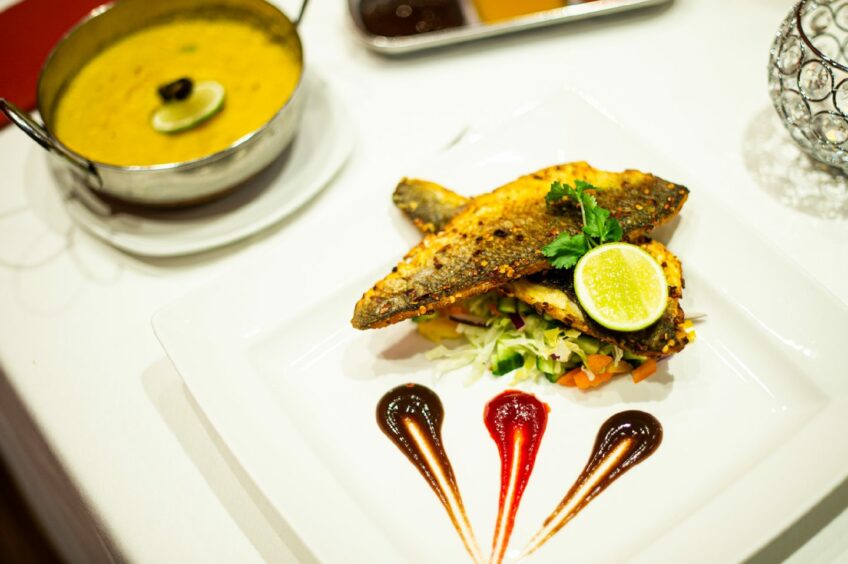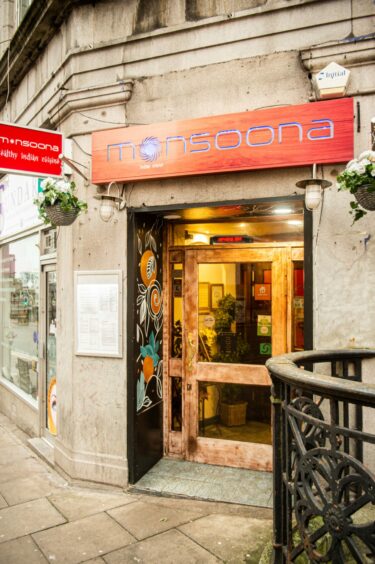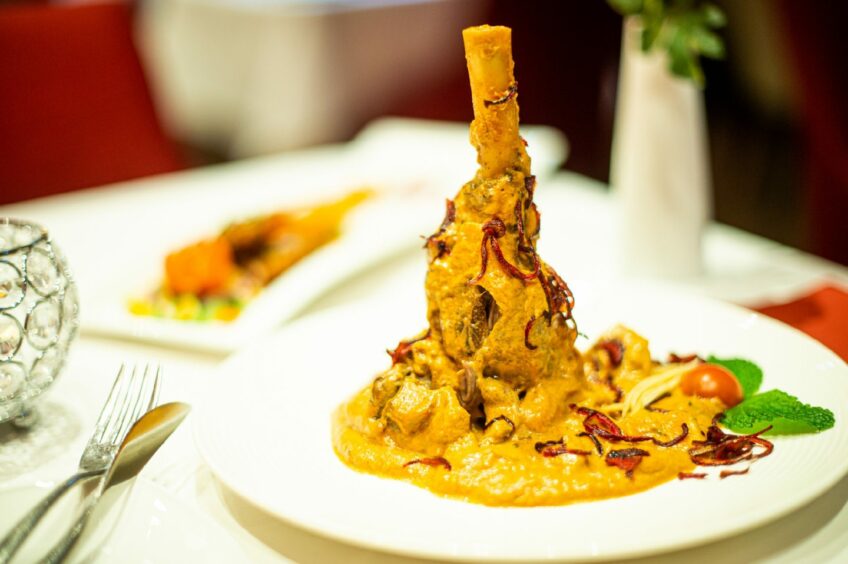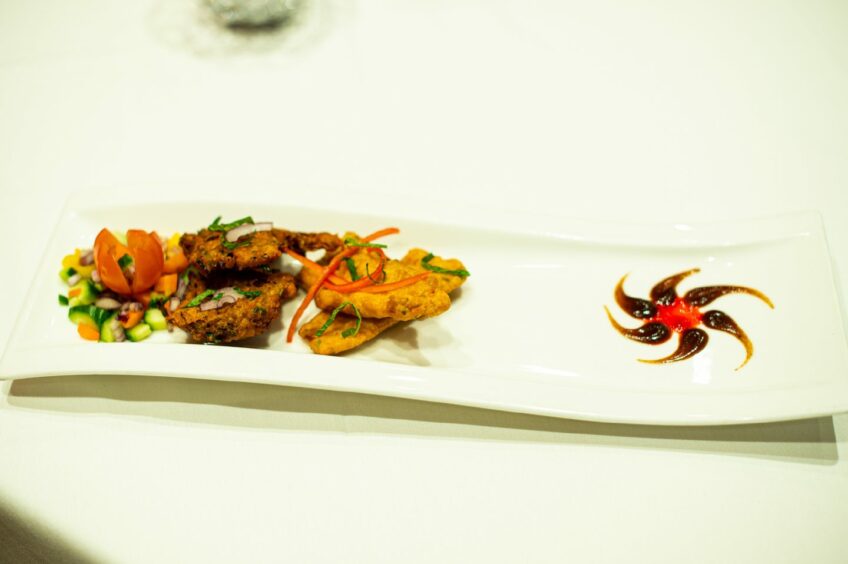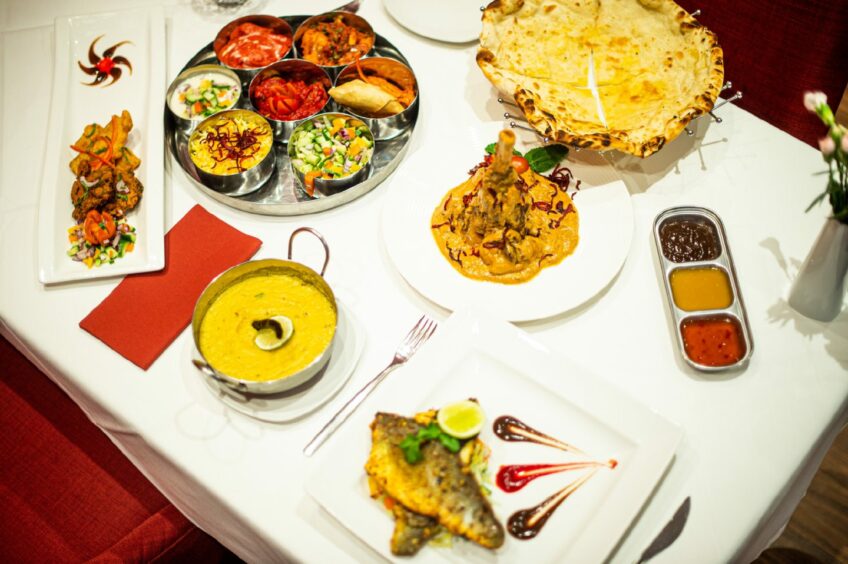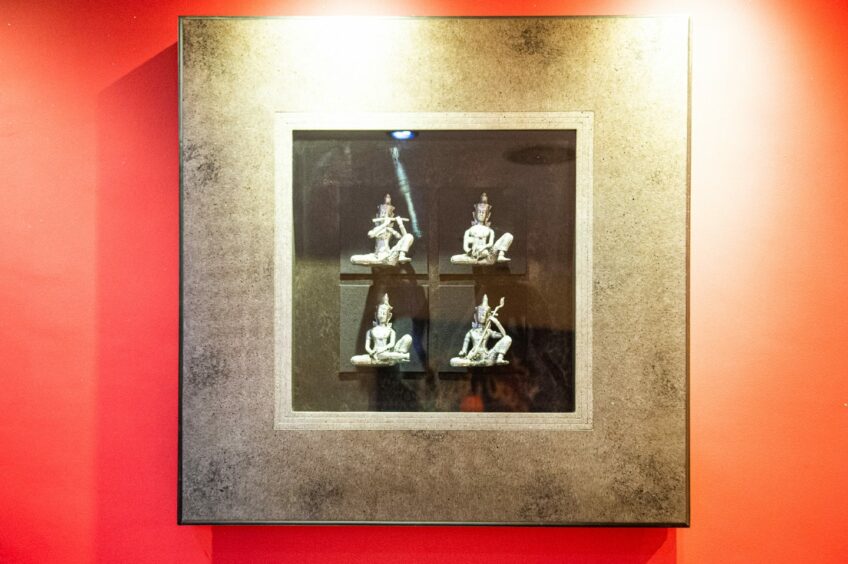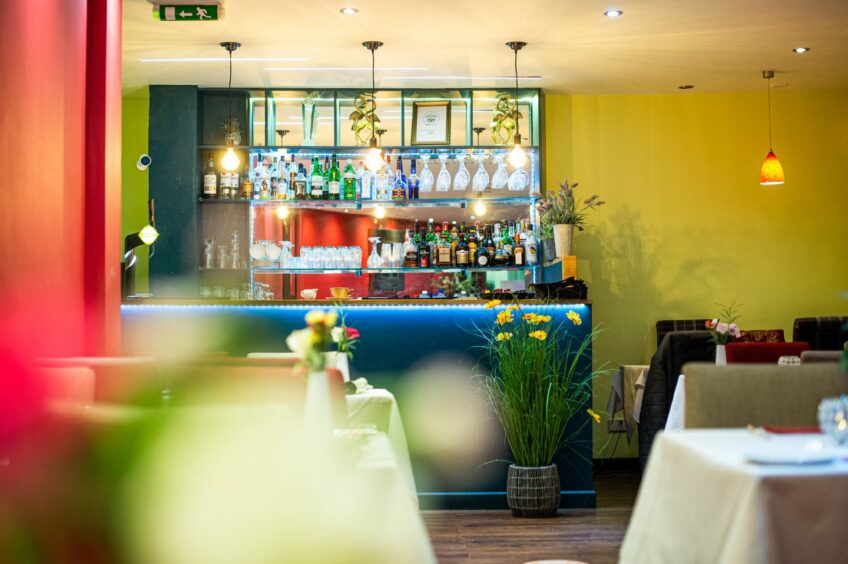It’s now 2022. You’ve probably signed up for your first class at the gym, had a jog at the park and filled your fridge with masses of green food by now.
But deep down, you know there’s still that part of you that could devour a doughnut within seconds.
Curries, however, don’t need to be assigned to the red list of your 2022 health kick.
Monsoona restaurant on Bridge Street, Aberdeen, are experts in whipping up tasty Indian cuisine that’s so much healthier than a typical takeaway.
Run by Mohammed Hossan and business partner Surya Raj, Monsoona’s dishes are all about using less fat and oil without any compromise on flavour.
Locals have been flocking to the restaurant more than ever in recent years and it’s currently sitting as one of the top three rated restaurants in the whole of the Granite City.
We talked to Mohammed, the co-owner and head chef at Monsoona, to give us the lowdown on the success of his restaurant.
What are some of your earliest memories of cooking? Did you cook often with your family?
I grew up in Bangladesh and my mum especially, she cooked a lot back home. I used to always try and take note of how she would make things and the taste would always make me wonder how she did it! I love cooking, and I guess it started quite early around age 13 or 15. My mum would teach me some of the dishes and others I would experiment with and improvise. There are a few dishes in our restaurant menu that we cook exactly like we would in Bangladesh – like the home recipes. The fish curry and chicken curry especially are just how we would cook them at home.
How did you end up in Aberdeen?
I came here to the UK in 2005 to study hospitality management. I went to London when I first arrived in the UK and I spent my first year of university studies in the city’s west end. Afterwards though, I wanted to pursue my studies in a better way. Robert Gordon’s University in Aberdeen, at that time, was recognised as one of the best for studying hospitality management. It was this that got me up to Aberdeen.
It was different from London, for sure. There were a lot more Asian people in London but not so much up here. But after taking the first few weeks to settle in, I started to find more local friends and was absolutely fine. We also had food related courses to do through university for hands-on experience. The Sandman Hotel in St. Andrew Street was where we used to do a lot of food practice and preparation. Everything that I’m doing now ties in with my studies and it’s working well, I believe.
When did Monsoona first open its doors? How has the journey been since then?
We opened the restaurant in 2010. I still remember opening day. We struggled for the first few months and there was a recession going on at that time, but after then things turned round. On the journey since, things have built up more and more. For some businesses, things can take off within a year. But if I compare now to ten years ago, the growth has been steady and is continuing to get better.
Why is promoting healthy Indian cuisine important at Monsoona?
When we opened in 2010, there was a trend at the time for healthier food options and lifestyles. I saw a demand for it, so I wanted the restaurant to meet that demand. From what I’ve seen over here, whenever you go to an Indian restaurant, the food will always come with a lot of oil. We wanted to reduce that with Monsoona.
Our dishes have around 80% less oil and we try to make them healthy by using things like low fat yoghurt and using coconut milk instead of a lot of cream. In Bangladesh, we’d sometimes use chicken skin instead of oil as the skin would release its own oil and be tasty too. When you eat our food, you’ll see there’s a smoothness to it all which isn’t oily or greasy and it still tastes authentic.
What are some of your most popular dishes?
Out most popular range of dishes is thali. It’s tapas style with a lot of different small dishes coming together. These usually come with samosas that we make in house, chicken tikka masala, lamb rogan josh with rice and naan bread all in one. We have sea bass fillet which comes with tarka dhal, we also have a south Indian vegetarian or vegan curry which we serve with tofu and various types of veg. It’s nice and tangy.
There’s also Bangladeshi pia-zu and beguni which people like at the restaurant. Beguni is aubergine coated in pakora sauce and pia-zu is lentil, onions and spices which give a crunch to the dish. Also, because we make most of our dishes from scratch, we can make most of our menu items in vegan varieties. If somebody wants a korma, instead of using cream we can use coconut milk, which some people even prefer better to cream.
Where do you source ingredients?
Whenever we buy our ingredients from local markets, we always try to get the best things like you would for your own home. We never compromise with the quality of our ingredients, be it spices, fish, chicken or lamb. We always buy fresh stuff for the kitchen. Some of the spices, we use a mortar to grind to make in house. We also don’t use any GM (genetically modified) oil.
What do you enjoy most about your job?
I love cooking. I’m still always trying to make our food better as we go along, whether that’s improving our curries or following the latest food trends. I really like to create new dishes and adapt our menu to meet demands for new trends. On TripAdvisor, we’ve been in the top five restaurants in Aberdeen for the last seven or eight years. We’re always up there, which to me says that we’re doing something right.
Future plans?
We are actually looking to find a bigger place. Obviously, it’s been a difficult time over the last few years and with Covid during Christmas just past, around 70% of our bookings were cancelled. So, because of a lot of things like this, we can’t move further right now. We’re at 55-seating capacity at the moment, but having a bigger venue in Aberdeen is definitely on the cards for the future.
Visit Monsoona’s website to book a table or phone 01224 590030.
